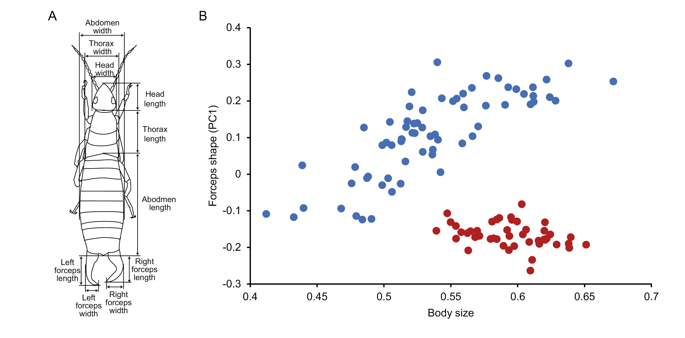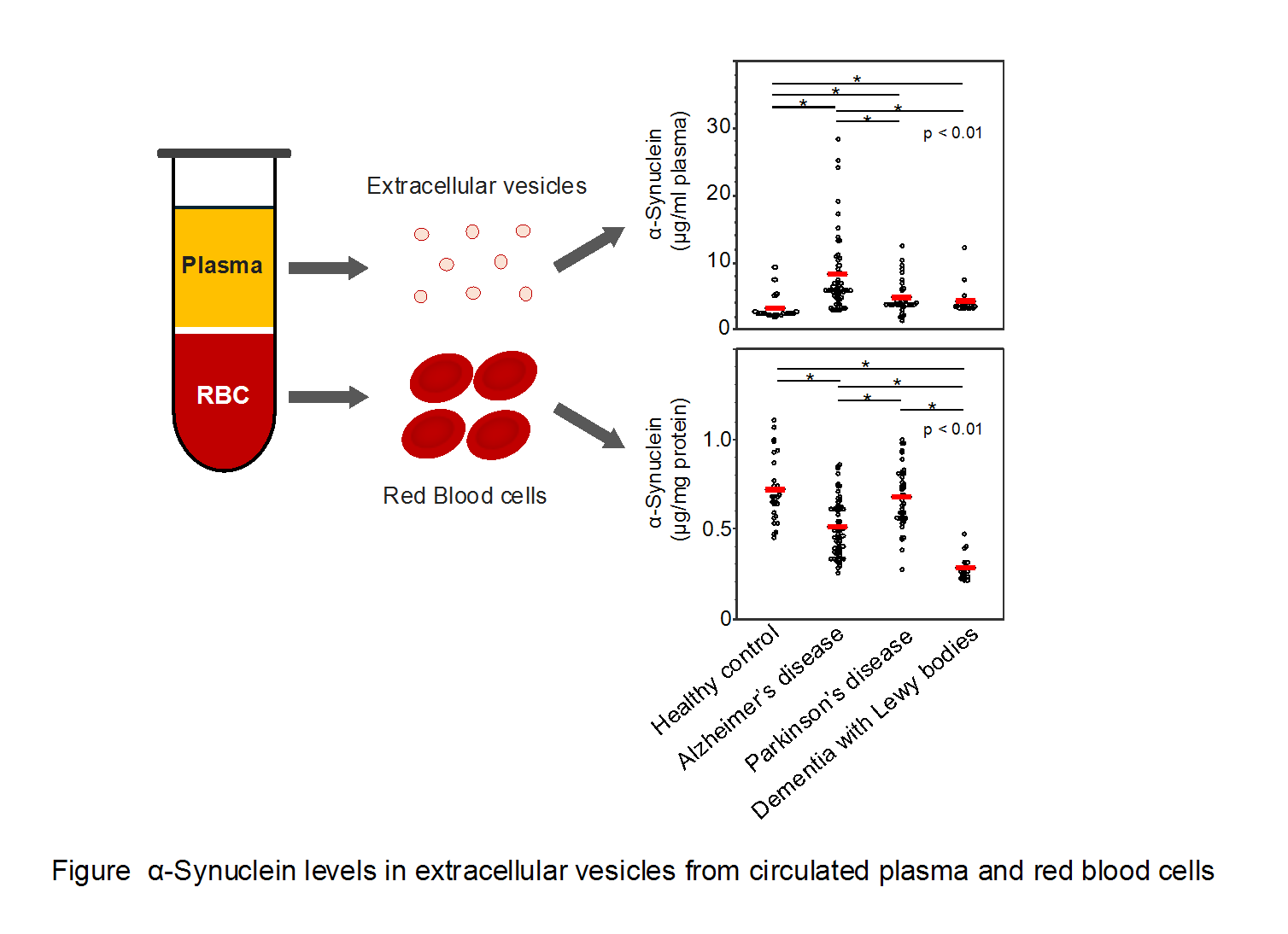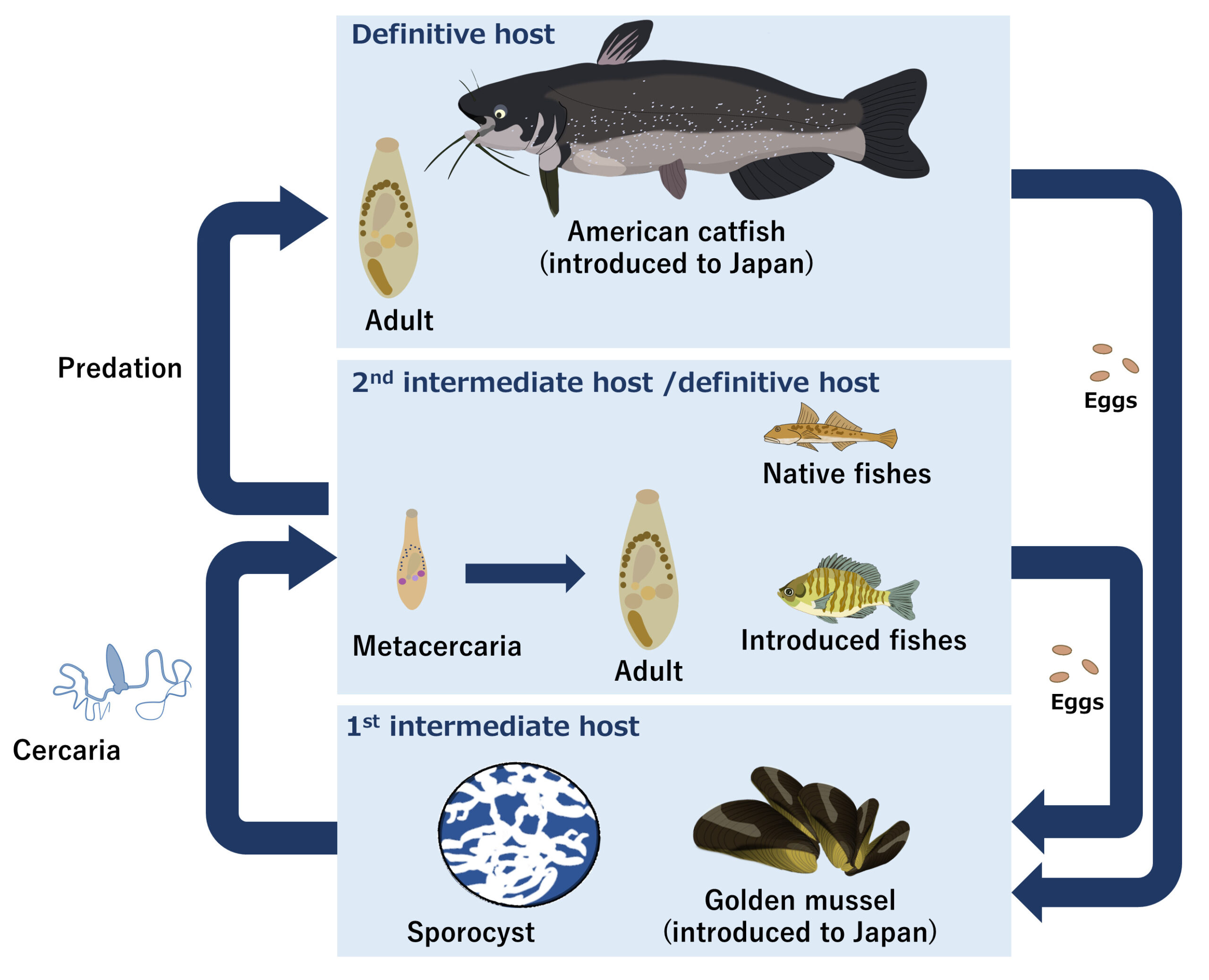January 29, 2021
Room Temperature SiGe Thermoelectric Material for Power Generation from Waste Heat in Everyday Life
~ Bringing the Materials Used in Spacecraft Closer to You: Demonstrating a Threefold Increase in Thermoelectric Power Factor Using a Unique Methodology ~
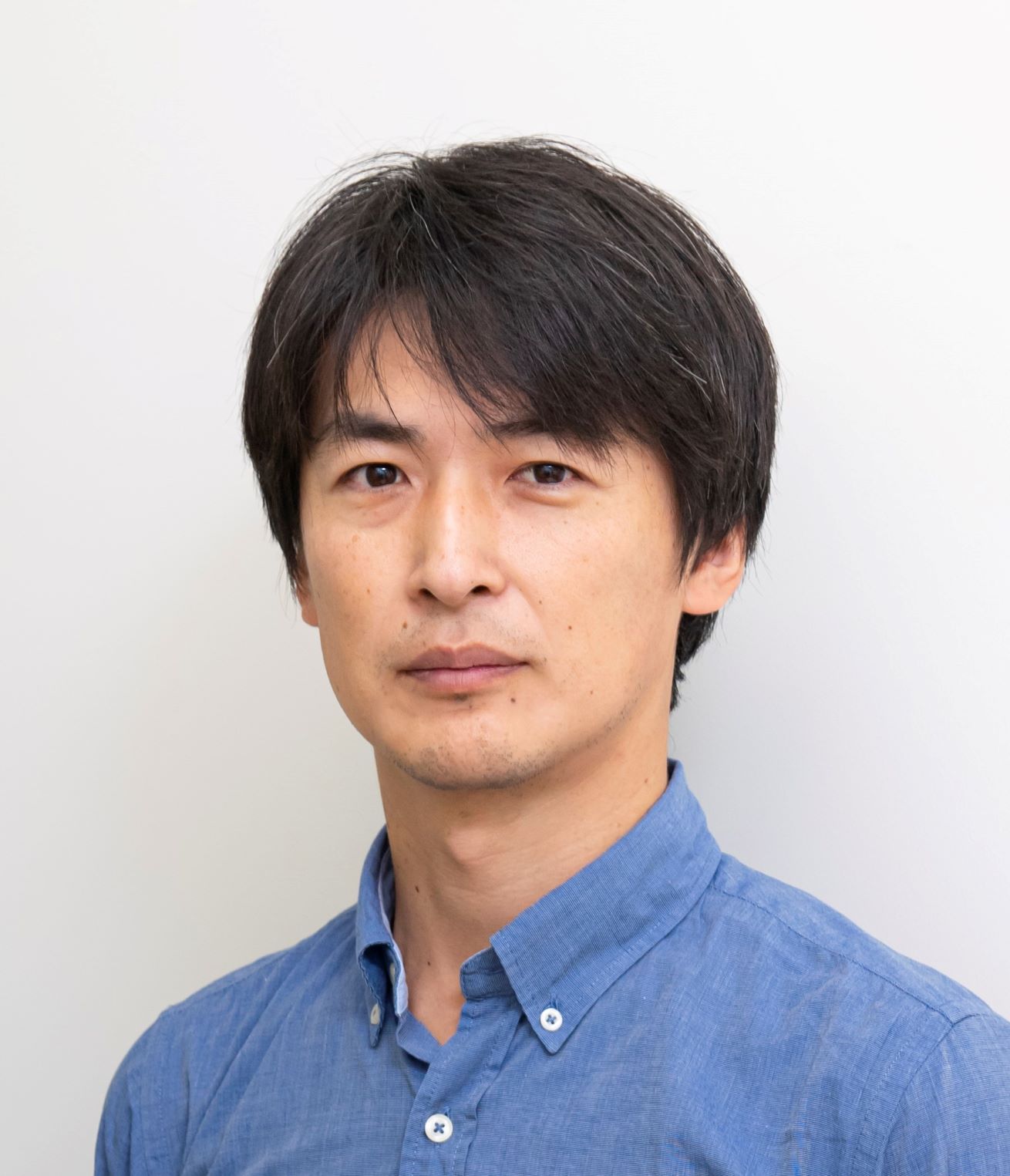
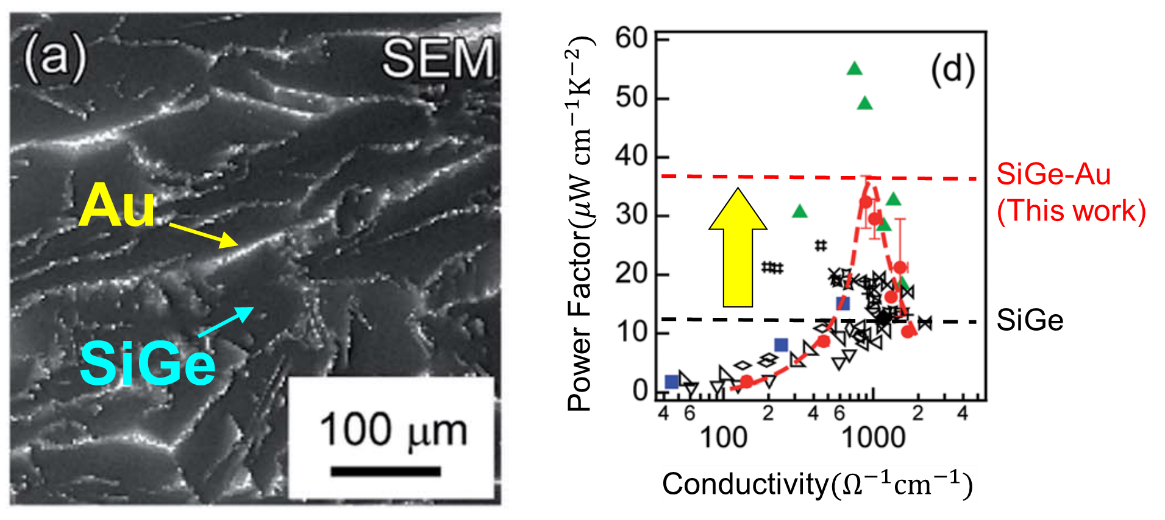
Scanning electron microscope image of SiGe and Au composite material, also showing the dependence of the thermoelectric power factor on the electrical conductivity.[S. Sakane et al., J. Mater. Chem. A, (2021)]
Until now, SiGe materials have been used only in the high-temperature region as power sources for spacecraft. With the achievement obtained in our study, we can expect to realize a “new energy society,” in which waste heat generated by high-performance SiGe materials operating at near room temperature can be reused as electric energy.
Key Research Findings
- Achieved a simultaneous increase in the electrical conductivity and Seebeck coefficient of an environmentally friendly SiGe thermoelectric material, and succeeded in simultaneously increasing the electrical conductivity and Seebeck coefficient to obtain a high thermoelectric power factor at room temperature.
- In thermoelectric conversion, a large electrical conductivity and Seebeck coefficient are necessary to achieve high efficiency, but it has been difficult to simultaneously increase both physical properties because of their correlation. This has been the greatest obstacle in converting waste heat into electricity.
- This work paves the way for the realization of a thermoelectric power generation source that uses unused heat as an energy source using non-toxic materials operating at room temperature.
These results have been published in Journal of Materials Chemistry A, on January 29, 2021.
READ MORE RESEARCH NEWS - SCIENCE
ACADEMICS
Undergraduate Programs
– Medicine
– Pharmaceutical Sciences
– Science
– Nursing
– Health Science
Graduate Programs
–Medicine
–Pharmaceutical Sciences
–Science
–Nursing
Undergraduate Programs
– Medicine
– Pharmaceutical Sciences
– Science
– Nursing
– Health Science
Graduate Programs
–Medicine
–Pharmaceutical Sciences
–Science
–Nursing
RESEARCH
– News
– Guidelines & Policies
– Support Offices
– Facilities
– Security Export Control
Non-Degree Programs
– Clinical Elective Program
– International Physician Observership Program

